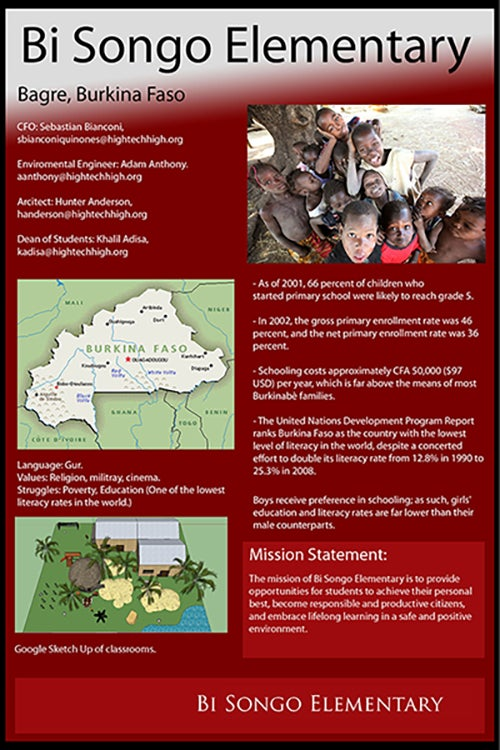Meeting the Needs of Gen Z Students

The oldest members of Generation Z are now in college — so, for educators, it’s worth figuring out what their educational needs are and how to meet them.
A recent survey of Gen Zers found that “89 percent of respondents rated a college education as valuable. For them, college is seen as the pathway to a good job. Despite their natural independence, their ability to process massive amounts of information quickly qualifies them to be excellent students.”
Besides providing an education, what else can educators do to make their institutions more appealing to Gen Zers? They can focus on changing the world, provide tangible benefits, and personalize the learning experience.
Focus on how to change the world, not just make money
“A lot of [students] see that their ability to change the world is part and parcel of their career,” said Corey Seemiller, a Generation Z expert and Wright State University professor. “So, they are coming to college with the expectation that they are going to be trained on how to change the world, not just make money.”

One idea is for faculty to assign students to find design solutions for global education, focusing on subject matter-relevant solutions. Jaimee Rojas, for example, had students use Adobe Creative Cloud to create a business plan and an architectural sketch.
Digital creative projects that find real-world solutions teach students “to empathize, problem-solve, plan, implement, design, and create.” As they complete projects like this, they will be prepared to change the world using their digital literacy skills.
Aim for tangible benefits
When looking at Generation Z, it’s important to consider Generation X, the parents of Generation Z.
“Baby Boomers wanted to provide everything that they never had as a child to their kids, which is why millennials were sort of oversaturated with trophies,” Seemiller said. “Generation X parents are more cynical; they are telling their kids, ‘If you want a trophy, you have to work for it.’”
In other words, Generation X wants to see tangible benefits from their child’s education. Gen Z, too, wants to see tangible benefits.
“Generation Z tends to be very practical about their college choices — but that doesn’t mean that they’re willing to miss out on the other things they want most from the process, either,” said a staff writer at LendKey. “Members of Gen Z are genuinely worried about maintaining financial stability throughout their adult lives. As such, they’re willing to dig in hard in order to accomplish their educational goals.”
As faculty integrate digital tools that foster digital literacy, students learn skills that they can apply directly to their careers. Focusing on digital literacy provides an opportunity for students to “dig in” to challenging, engaging projects.
Faculty can assign projects like using Adobe Creative Cloud to create a digital portfolio. Not only does this project develop digital literacy soft and hard skills that are immediately useful, but it also can help students secure internships and jobs.
Personalization
According to LendKey, “[F]inding the balance between privacy and personalization might just be the key to making sure Gen Z is getting exactly what they expect.”
In a 2017 study, “88 percent of Gen Z agreed with the statement “Protecting my privacy is very important to me.’” But that doesn’t mean they’re not interested in using digital tools to create a personalized experience. Generation Z expects personalization. It’s about finding a balance. Digital literacy in the classroom empowers students and faculty to use digital tools to personalize the learning experience (and as students become more digitally literate, they also become better at protecting their privacy online). Personalized learning includes learning problem-solving skills, creating innovative projects, and practicing communications.
“The promise of personalized learning is now being tested,” says Ray Schroeder at Inside Higher Ed.
Matthew Lynch, a writer for the Tech Edvocate, describes how faculty can pass the test and create a personalized classroom:
- “First, learning is guided by the interests of the student. Teachers will guide students to select materials, projects, and products that reflect student interests.
- “Second, students have more choice in virtually every aspect of the process, including where, when, and how they learn the material.
- “Third, teachers take on the role of coaches instead of the role of information purveyors.
- “Fourth, the pace is determined by the learning process of the student.
- “Fifth, ed-tech tools are used to manage the multiplicity of learning experiences.”
Adobe Creative Cloud has a variety of tools faculty can use to teach creative principles. As students develop their digital literacy skills, they’re empowered to customize their learning experience. Perhaps they really love to write — here, digital tools can help them create customized images to illustrate their reports, rather than just pulling generic images from the internet. Rather than writing an essay, for example, they can create a visual story that really helps them hone in on an issue. Rather than pulling generic images from the internet, they can use their design skills to create relevant, powerful images to illustrate their work.
And as faculty develop and encourage digital literacy, they too have the flexibility to cater curricula and coursework to their students.
Digital literacy is being empowered to use digital tools, enabling students to solve problems, create innovative projects, and enhance communications to prepare for the challenges of an evolving workplace. These skills allow students to follow their interests, wherever those interests take them — they have wider choices as to what they can pursue, teachers can coach them along, and students can set their own pace.
What can educators do to make their institutions more appealing to Generation Z students? They can allow students to focus on changing the world, provide tangible benefits, and personalize the learning experience.
Read more about how higher ed can better meet the needs of its students.